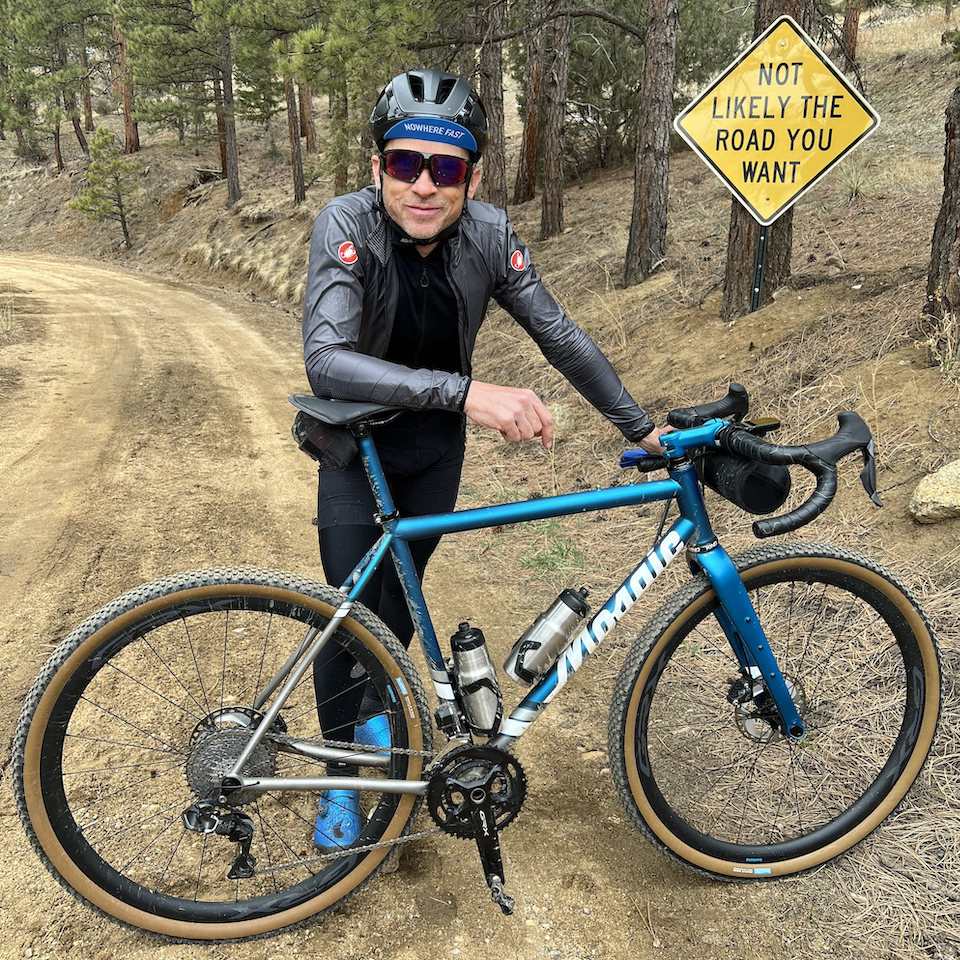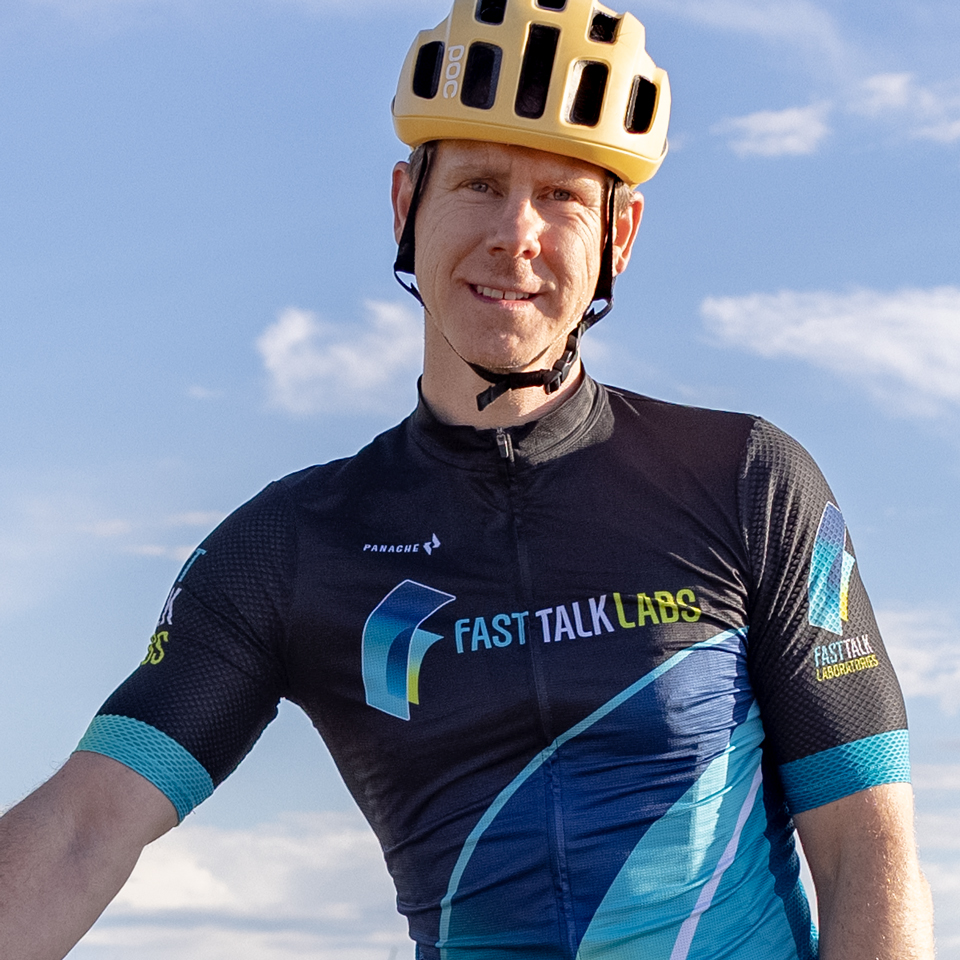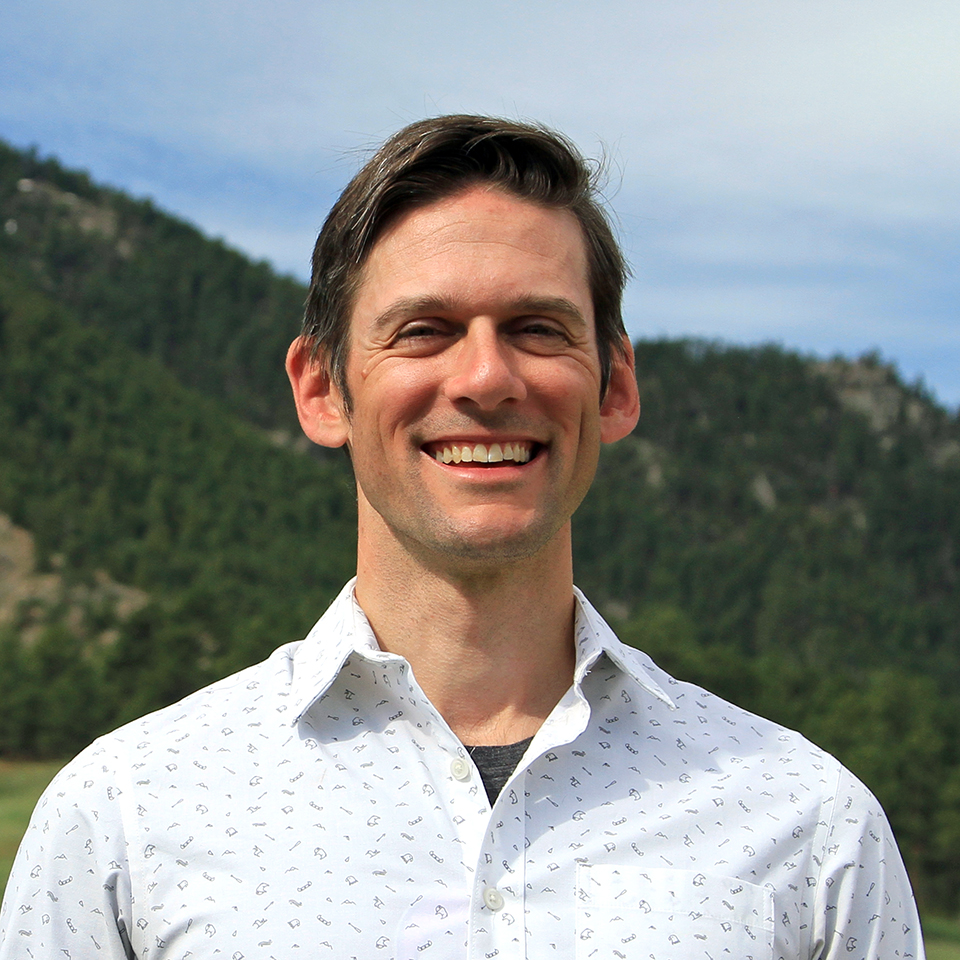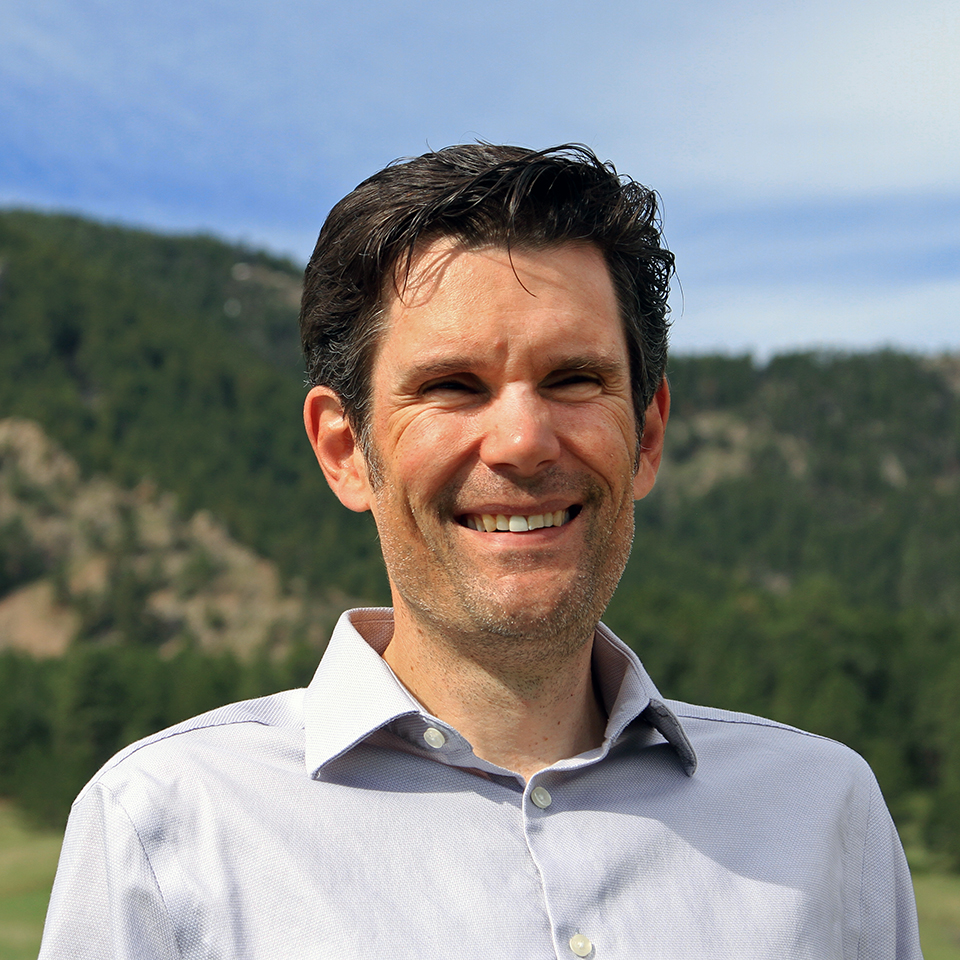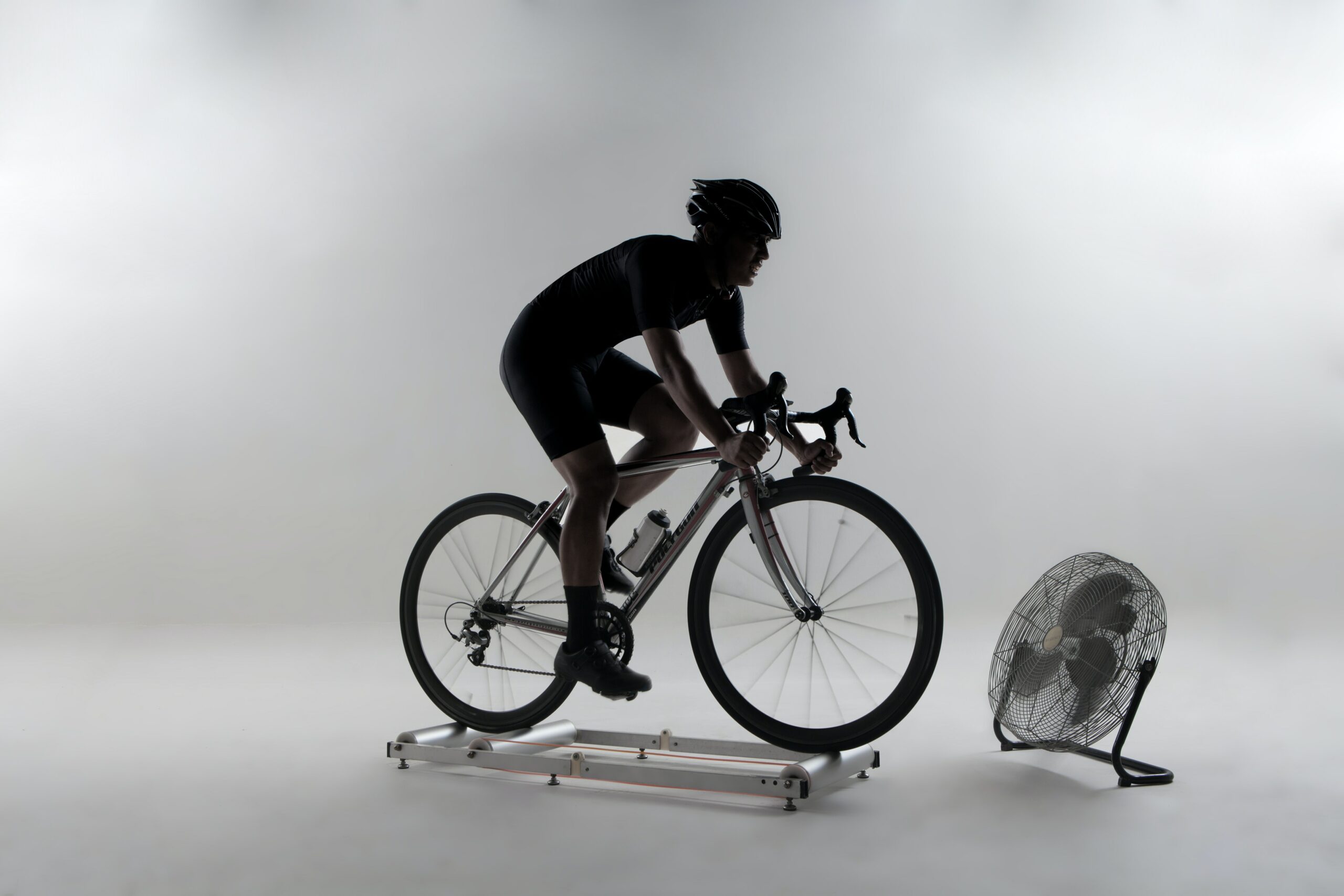
 Indoor Cycling Pathway
Indoor Cycling Pathway
Experts in this Pathway
What You’ll Learn
Get the Most from Riding Inside
Indoor cycling is here to stay. Indoor training and racing have rapidly become highly effective ways to gain fitness. How else can you so efficiently maximize your workouts with a time-crunched schedule, jump into a virtual race to practice your race craft, or simply spend some time on the bike away from cars?
In this Indoor Cycling Pathway, you will hear from experts who have been using what we would now affectionately call “dumb trainers” since the 1990s. They’ve witnessed the full scope of the revolutionary changes that have brought about the recent gamification and technological advances of indoor cycling and even professional e-racing.
With their help, we’ll explore the many nuances of indoor training: What should you do with your outdoor power numbers—keep them the same indoors or change them, and by how much? Are there biomechanical considerations to be aware of when moving indoors? How significant an impact do they have on a given workout?
In the end, you’ll learn that making the move to indoor cycling doesn’t have to be an expensive endeavor. It can complement your outdoor cycling in many ways, and if you maintain the fundamentals and structure of the training process, you will be able to do a lot with a little.
The fundamentals of indoor cycling
The author of the famous Cyclist’s Training Bible, Joe Friel has also written the definitive work on indoor cycling. His latest book, Ride Inside: The essential guide to get the most out of indoor cycling, smart trainers, classes, and apps, explores myriad aspects of training indoors. In this podcast, we dissect many of these nuances, and Joe and his co-author Jim Rutberg also discuss the specifics of indoor workouts, and why what works outside isn’t always the best practice inside—and vice versa.
Finally, three riders from a professional eSports cycling team help us understand the intricacies of this new virtual race world: how to use the draft; why knowing the courses makes such a difference; how to set up your trainer, and much more. We also touch upon the all-important training aspects of indoor cycling. Click here to listen to this podcast.
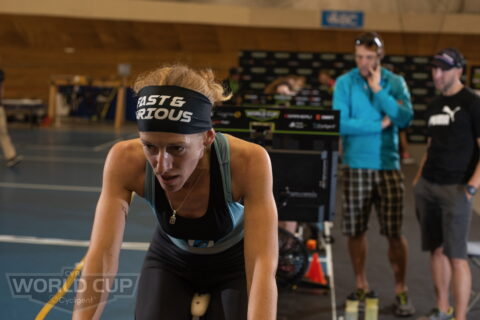
Mastering Indoor Cycling, with Joe Friel, Jim Rutberg, and Riders on the eSports Team Saris-The Pro’s Closet
Indoor cycling is different
There are several factors that make riding indoors different from outside. In this podcast, we discuss both the science and experience of the trainer, including:
- How riding on a trainer differs from riding on the road, including our interaction with the bike and the impact that trainer inertia has on our biomechanics.
- What impact these differences have on our power and heart rate, and why we shouldn’t use the same numbers inside and outside.
- Situations where it’s good to use a trainer—and when it may be even better than riding on the road, such as when we’re doing neuromuscular work.
- Situations where you might want to avoid the trainer.
- The gamification of trainers by tools like Zwift, Trainer Road, and Sufferfest, and how this is changing our perspective on trainers. It can be both good and bad.
- When to use rollers rather than a trainer.
- How much time to spend on the trainer, and alternatives even when there’s snow outside.
Click below to listen to this podcast.
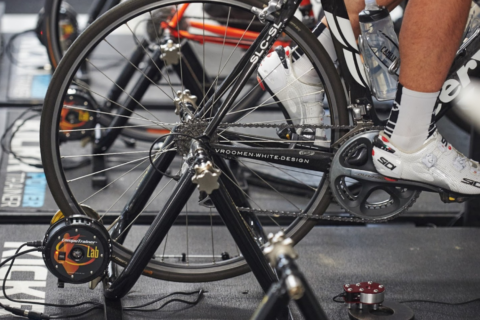
Rethinking the Science of Trainers
Your guide to winter cycling
We’re lucky to have one of the top environmental physiologists, Dr. Stephen Cheung, as a longtime contributor to Fast Talk Labs. In this webinar, Dr. Cheung offers practical advice and educated tips on heat management (with more specifics on this topic in the next section of this Pathway), adaptive differences between indoor and outdoor workouts, and what to do with those “nice” winter days when you can sneak outdoors. Click below to watch this webinar.
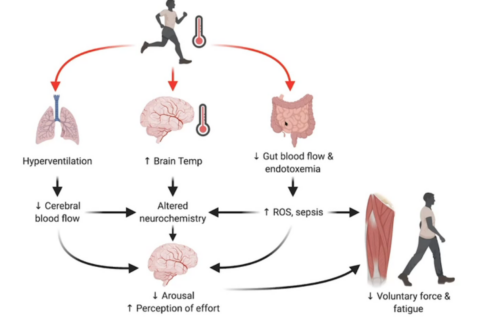
Your Winter Guide to Indoor Cycling, with Dr. Stephen Cheung
Designing Your Indoor Cycling Space
Heat management
When setting up your indoor cycling space and transitioning to the trainer, there are several practical considerations to keep in mind, including:
- What kind of fan do I need? How many fans should I have?
- How will the temperature affect me?
- Do I need to fuel or hydrate any more for indoor workouts?
Click below to watch this webinar.
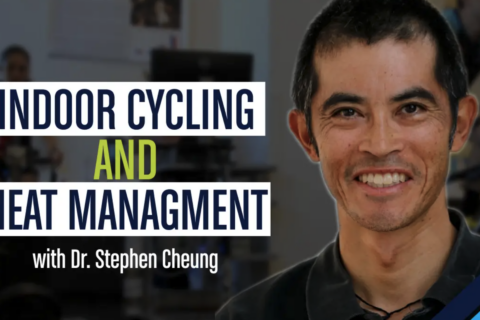
Indoor Cycling and Heat Management with Dr. Stephen Cheung
Next, join Dr. Stephen Seiler to learn how to manage heat during indoor workouts. In this time-efficient webinar, he focuses on the necessity for air movement by highlighting the physiology of work indoors.
We can produce a tremendous amount of heat, yet the body does a great job controlling its temperature within a very narrow margin. Learn how the body eliminates heat through radiation and evaporation.
Once again, we focus on fans—placement, number, and intensity. All of these are key considerations when setting up your room for maximal ventilation. The take home? Ventilate and hydrate! Click below to watch this workshop.
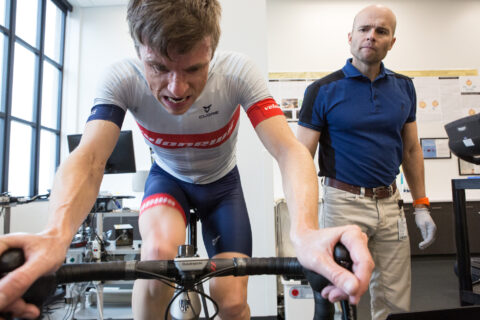
How to Manage Heat During Indoor Workouts
Adjustments to Training Indoors
Health impacts
When you’re moving indoors for longer periods of time, don’t make the mistake of only riding the bike. Bring other activities into the mix so you can strike a balance and keep the body healthy.
Dr. Seiler focuses on four main areas of training indoors with his workshop:
- Bone health
- Muscular balance
- Intensity and duration balance
- Energy balance
Click below to watch this workshop.
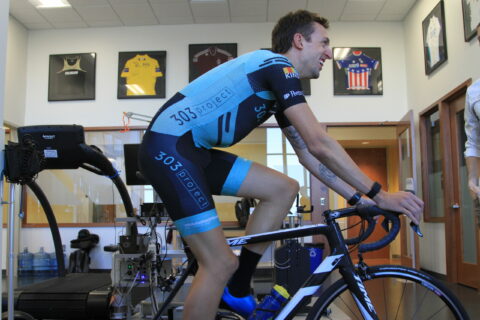
Adjustments to Train Indoors
How a pandemic changed training
During the pandemic, Dr. Seiler surveyed over 1,000 endurance athletes to understand how they changed their training habits due to the solo or indoor nature of that training. In this webinar, he explores the changes in weekly training volume, what our weekly “long” sessions turned into, and how much we’ve changed our weekly HIT workouts. Click below to watch this workshop.

Adjusting Training During COVID-19
How to use two-a-days indoors
While the science on the effectiveness of two-a-day workouts is still developing, coaches and athletes have already discovered their benefits. In this podcast, coach Neal Henderson, pro Petr Vakoc, and physiologist Jared Berg discuss the benefits of two-a-day training sessions, and often refer to the use of indoor training as one of the best ways to utilize this approach. Click below to listen to this podcast.

Effective Two-A-Day Workout Strategies, with Neal Henderson
The Art of Zwifting
The virtual cycling world known as Zwift is quickly becoming an iconic platform for indoor cycling training and competition. You can ride with, and race against, people from all over the world. Zwift even hosts professional and world championship Esports competitions.
Now that you have a more comprehensive understanding on how to build your pain cave, how to adjust your training for indoor life, and how trainers impact workload, you might want to dive deeper—maybe even start competing in virtual racing. That’s where Zwift comes in, with all of its nuances.
The great thing about Zwift racing is that it can bring you to your limit. The bad thing about Zwift racing is that it can bring you to your limit. But let’s step back and find the utility in this – we’re not all racing to win. Many (most?) of us are racing because we enjoy it, learn from it, and can track our progress through racing. If you finish with a higher power output, last longer with the main pack, or just finish a race feeling like you managed your effort better, those are all great outcomes that give us a large sense of accomplishment.
Zwift fundamentals
Exercise physiologist Rob Pickels details the basics of getting started on Zwift, whether you want to test, train, or race. Setting your expectations and understanding the nuances of the virtual platform will help you improve your skills and techniques so you can find more enjoyment while gliding over the virtual tarmac. Click below to read this article.
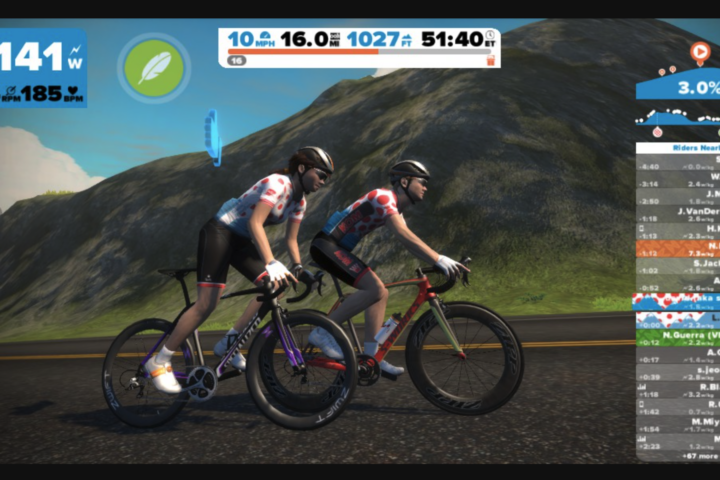
How to Get the Most from Training with Zwift
Advanced Zwift race tactics
Once you have a few Zwift races under your belt, or chamois, you’ll want to dive deeper into the elements of Zwift racing. Rob Pickels will expand on nuances of racing:
- Moderating your effort to conserve energy until it’s really needed
- Evaluating the riders around you
- Becoming a master of the pack
- Outriding your weaknesses.
Click below to read this article.
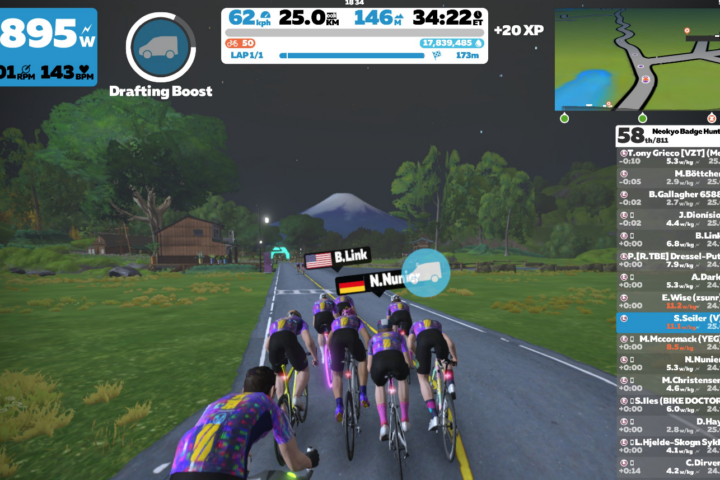
Mastering Zwift Race Tactics
Warming up for Zwift racing
Virtual races are fundamentally different from traditional road cycling races. Inevitably they start fast, akin to a cyclocross race. With that in mind, Rob Pickels examines the science to explain how you should design an appropriate warm-up routine for the chaotic starts of virtual racing. Click below to read this article.
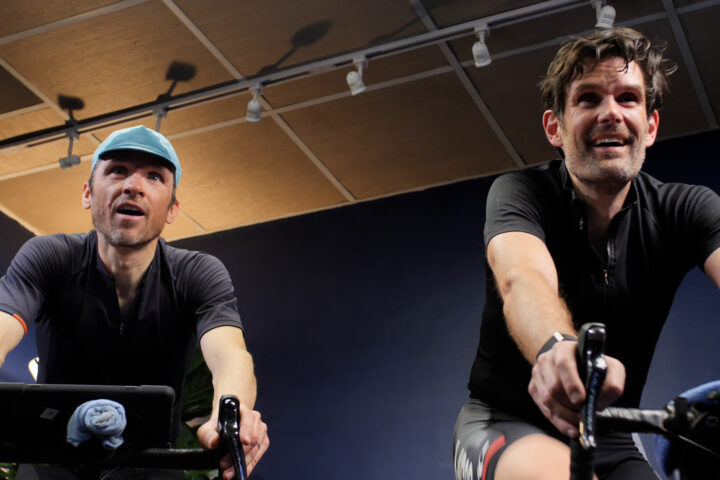
How to Warm Up for Zwift Races
Zwift for testing?
What if you’re tracking metrics and want to increase your FTP? Can a 60-minute Zwift race be a decent substitute for a 60-minute FTP test? Dr. Stephen Seiler does a deep dive into the considerations, including:
- Is Zwift a good measure of fitness?
- Average power across different types of races
- How do we deal with surges in races?
Click below to watch this workshop.
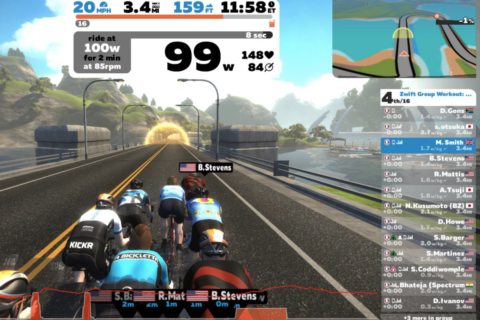
Zwift Hour of Power: Can a 60-Minute Zwift Race Work as a Test?
Long slow distance rides on Zwift?
We can race and train on Zwift, but what about those LSD rides—the long days in the saddle? How can we monitor progress and look for changes when doing those endurance efforts on Zwift?
Dr. Stephen Seiler asks the question: how long is too long on Zwift? He does this by analyzing a ride performed by Jonas Abrahamsen, of the UNOx UCI Pro Team. Get ready for some impressive metrics showing high durability. We’re not all doing rides this long, but we can always improve our durability by training smart, at the correct intensities, and monitoring our recovery to get the adaptations we want. Click below to watch this workshop.

How Long Is Too Long on Zwift?
Indoor Cycling Workouts
As you begin your indoor training routine, choose from our selection of video workouts to learn about proper execution—and follow along as we train together. You will learn about the focus of every session and walk away with the “why” behind what we are doing.
These workouts are also available in our Cycling Interval Training Pathway where we discuss in more detail the why, how, and when of these workouts, and also provide detailed file analysis to ensure you are executing your sessions correctly.
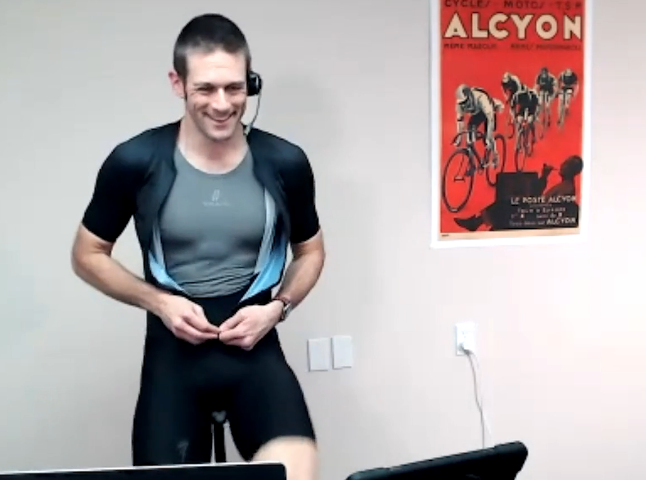
Neuromuscular Workout: Muscle Activation Warm-up & Seated Stomps
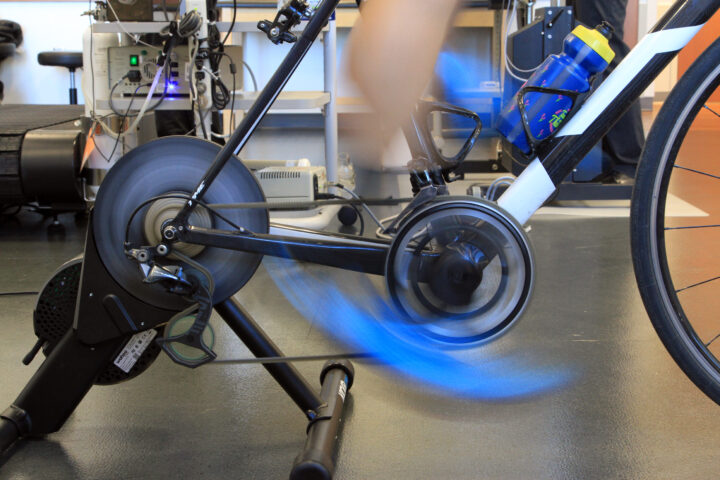
Neuromuscular Workout: Big Gear Standing Starts
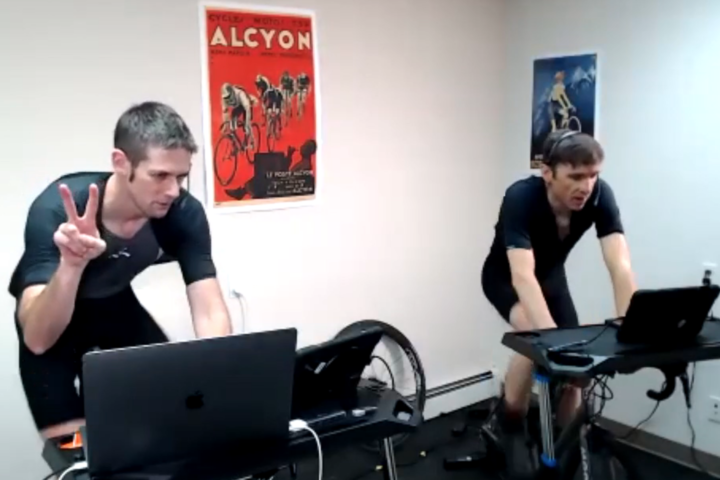
Aerobic Conditioning: Sweet Spot Bursts
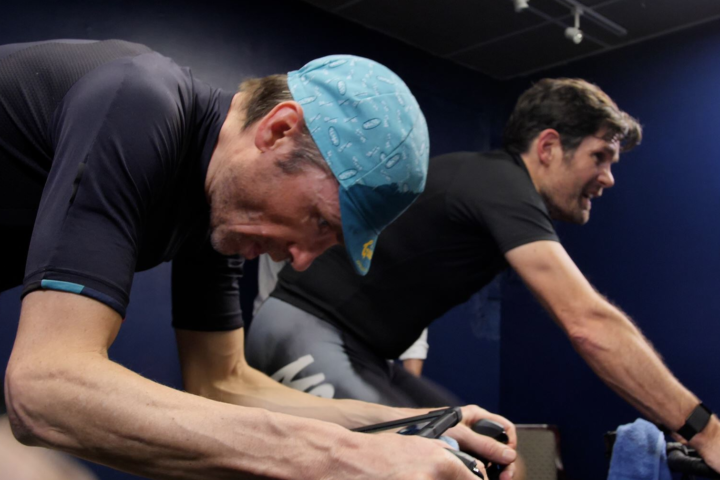
Structured Workout: Over/Under Intervals with Cadence Focus
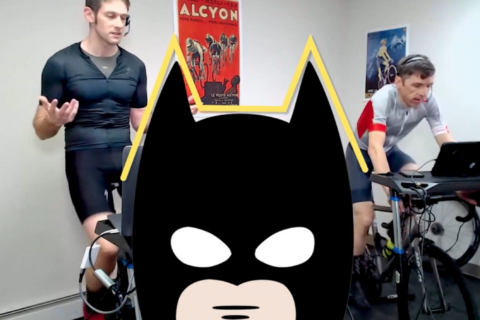
Structured Workout: Batman Intervals
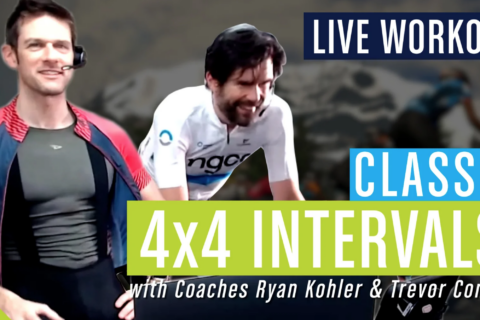
Structured Workout: 4×4 Intervals
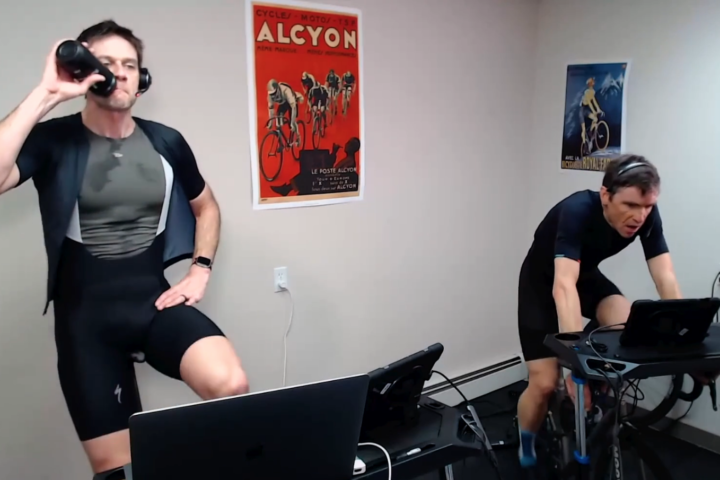
Structured Workout: 40/20 “On/Off” Intervals
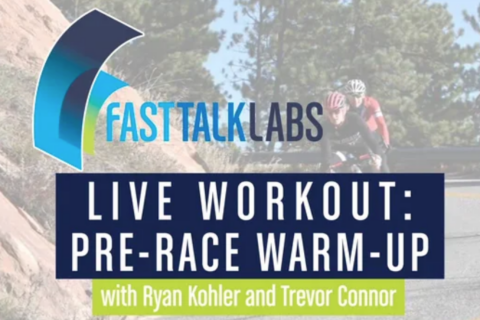
Structured Workout: Pre-Race Warm-Up
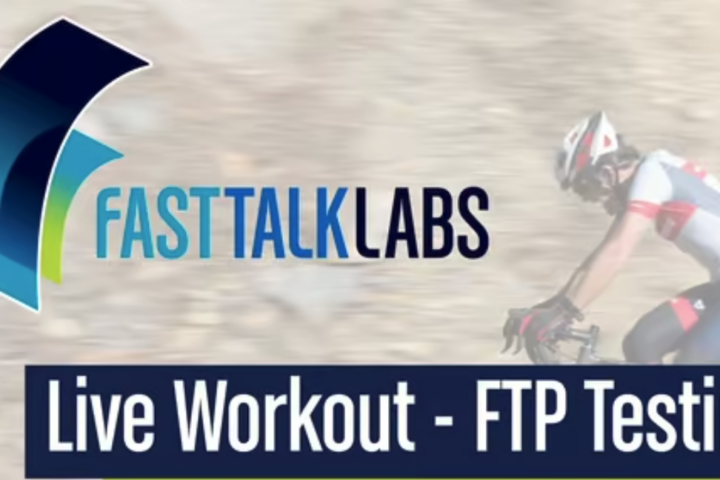
Structured Workout: 20-Minute FTP Test
Join the conversation
Do you have additional indoor cycling questions that you would like answered by our staff and endurance community? Head over to our Forum and post there to collaborate, find additional answers and insights, and contribute tips for optimizing your ride inside.
STILL NEED HELP?
Indoor cycling is an exciting new avenue for training and racing. If you still need help with learning the nuances of this new virtual world, schedule a free consultation with us and we will help you develop an individualized path forward.
Cover photo: Aditya Wardhana on Unsplash
